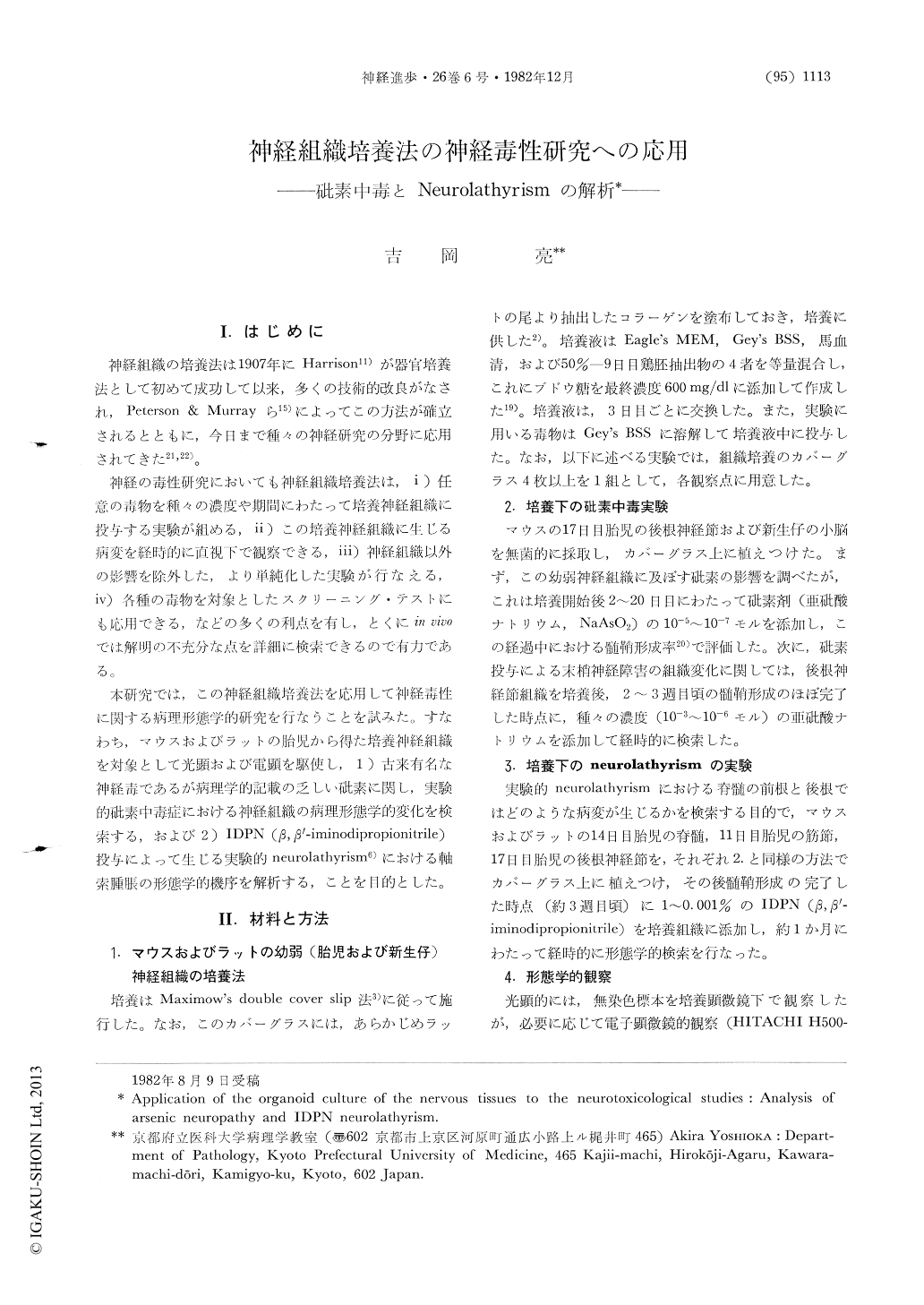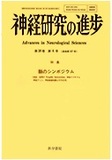Japanese
English
特集 第17回脳のシンポジウム
神経組織培養とその応用
神経組織培養法の神経毒性研究への応用—砒素中毒とNeurolathyrismの解析
Application of the organoid culture of the nervous tissues to the neurotoxicological studies: Analysis of arsenic neuropathy and IDPN neurolathyrism.
吉岡 亮
1
Akira Yoshioka
1
1京都府立医科大学病理学教室
1Department of Pathology, Kyoto Prefectural University of Medicine
pp.1113-1122
発行日 1982年12月10日
Published Date 1982/12/10
DOI https://doi.org/10.11477/mf.1431905459
- 有料閲覧
- Abstract 文献概要
- 1ページ目 Look Inside
I.はじめに
神経組織の培養法は1907年にHarrison11)が器官培養法として初めて成功して以来,多くの技術的改良がなされ,Peterson & Murrayら15)によってこの力法が確立されるとともに,今日まで種々の神経研究の分野に応用されてきた21,22)。
神経の毒性研究においても神経組織培養法は,i)任意の毒物を種々の濃度や期間にわたって培義神経組織に投与する実験が組める,ii)この培養神経組織に生じる病変を経時的に直視下で観察できる,iii)神経組織以外の影響を除外した,より単純化した実験が行なえる,iv)各種の毒物を対象としたスクリーニング・テストにも応用できる,などの多くの利点を有し,とくにin vivoでは解明の不充分な点を詳細に検索できるので有力である。
The organoid culture of the nervous tissue is useful especially for neurotoxicological studies, and seems to have several advantageous points as follows:

Copyright © 1982, Igaku-Shoin Ltd. All rights reserved.


